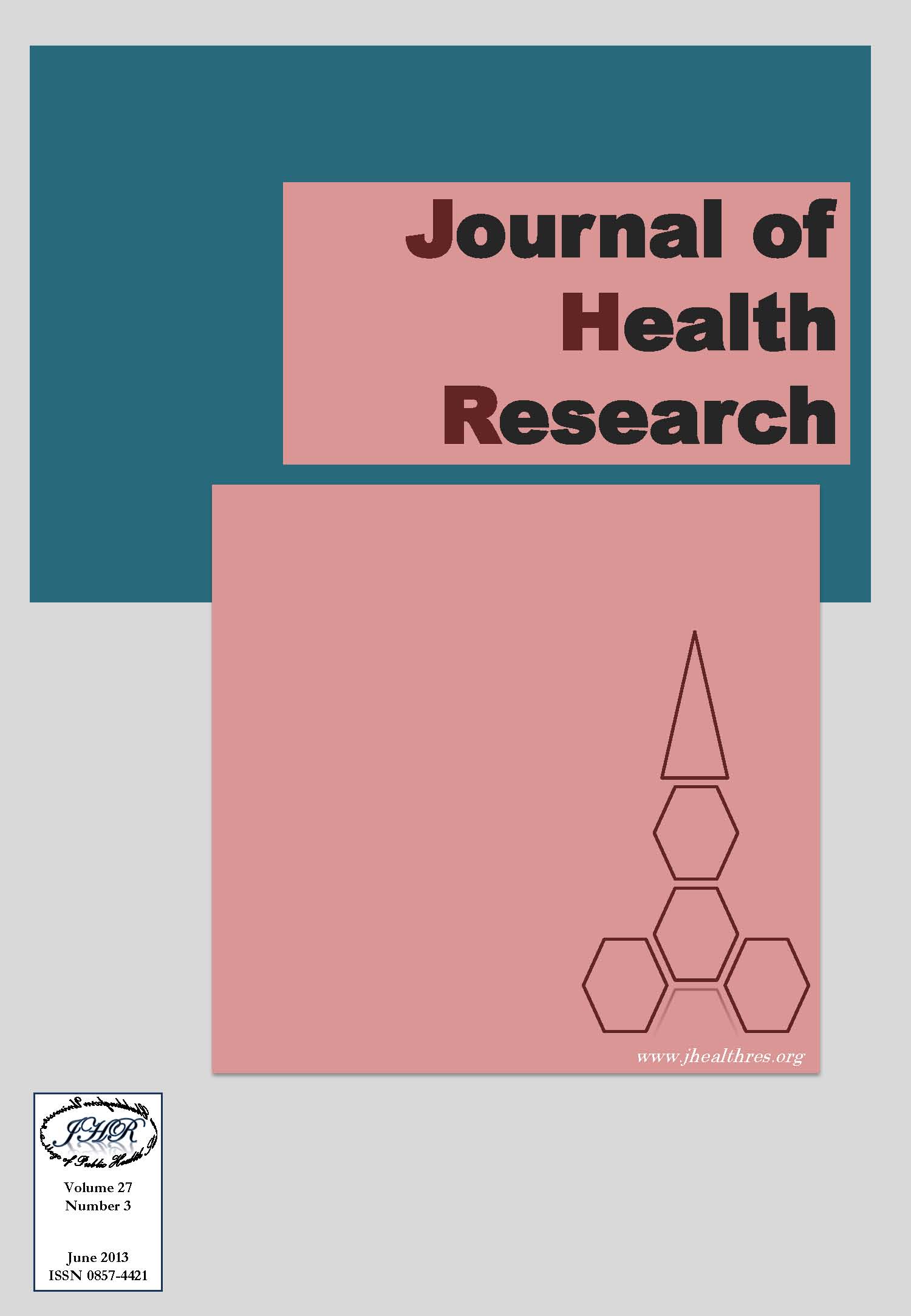Health Risk Assessment of Workers Exposure to BTEX from Incense Smoke at Worship Places in Bangkok
Keywords:
Health risk assessment, BTEX, Incense smoke, Worship placeAbstract
This study aimed to evaluate potential occupational exposure and estimate their health risk in worship places. The sampling was performed on Sunday (high number of visitor or peak day) and Wednesday (non peak day) during April (dry season) to July (rainy season) 2012 at two famous worship places which are Tao Maha Bhrama (TMB) and Kanlayanamit Woramahawiharn (KW) temple. Each sampling was performed for 8 working hours using an activated charcoal filled glass tube connected to a personal air pump with an air flow rate of 100 ml/min. At both temples, four different locations were sampled at 1.50 m above the ground. The benzene, toluene, ethylbenzene and xylene (BTEX) contents were extracted and analyzed by gas chromatography with flame ionization detection. The highest 8-h average BTEX exposure among workers was the janitor at the TMB temple who was exposed to high levels of benzene (119.7 µg/m3), ethylbenzene (19.9 µg/m3) and o-xylene (19.0 µg/m3). At the KW temple, the ambient position was found to have the highest average concentration of benzene, toluene, m,p-xylene and o-xylene at 31.1, 58.8, 59.2 and 2.94 µg/m3, respectively. At TMB (but not KW), the 8-h average concentration of toluene, ethylbenzene, m,p-xylene and o-xylene on non-peak days (143.7, 24.5, 32.9, and 12.9 µg/m3, respectively) were significantly (1.3- to 2.0-fold) higher than those on peak days (109.3, 12.0, 16.6, and 9.84 µg/m3, respectively). The 95% confidence interval of lifetime cancer risks of the workers at the TMB temple were in range of 5.88x10-5 to 1.02x10-4, which was 2.3-fold higher than those at the KW temple (2.08x10-5 to 3.6x10-5), whilst the lifetime cancer risks of the workers at both temples were higher than the acceptable criteria (10-6). Thus workers at both temples have unacceptable potential cancer risks from exposure to benzene and ethylbenzene. However, the hazard quotients (HQs) for the workers exposure to the non-carcinogenic compounds (toluene, m,p-xylene and o-xylene) at both temples were lower than 1 and so of no increased health risk (no concern) from these agents.







